It often seems as if there are few bright spots in politics these days, but the enlightened renovation of a regional government building in Germany is offering a sunnier outlook due to an ingenious daylighting strategy devised by the Berlin-based Staab Architekten and the lighting-design firm Licht Kunst Licht (LKL).
When the Administration for Property and Construction of the Federal State of Baden-Württemberg set out to renovate its parliament building in Stuttgart, the State capital, its chief goal was to upgrade the modernist, reinforced concrete structure designed by Kurt Viertel (circa 1960) to meet 21st-century standards for energy, accessibility, acoustics, security, and safety. As part of the overall brief, the authority also aimed to improve conditions for the 143 sitting members of parliament, stipulating that daylight and views penetrate their Debating Chamber, a windowless assembly hall with a shallow balcony located at the core of the building’s second and third floors.
Additional Content:
Jump to credits & specifications
“The scheme sounds easy,” says LKL lighting designer Benjamin Dorff. But, in fact, he notes, it was a challenge, due to the protected status of the three-story building, which sits on a site measuring 177 by 177 feet. Considered an icon of postwar modernity and optimism, the historic property was the first parliament building to be erected in Europe after World War II, and its existing bronze and glass facade could not be compromised.
Without changing the appearance of the exterior, the architects devised a strategy for bringing light into the building’s core. By reconfiguring media booths within the ninesided, oak-clad Debating Chamber, they were able to punch openings along its rear, beneath the balcony. The result is a series of glass walls and doors that filter sunlight into the space from an adjacent double-height lobby that faces a rose garden. To illuminate the center of the room, they collaborated with Dorff and his team to develop a unique daylighting system by inserting 48 circular skylights into the flat roof above the chamber. These openings are arranged above a translucent dropped ceiling made of satin-finished PolyEthleneTerephtalate Glycol (PETG) thermoplastic sheets, which serves as a giant diffuser.
Thirty-eight of the skylights measure about 2½ feet in diameter. Outfitted with electrochromic glass, they darken as the sun gets brighter and vice versa, assuring thermal and visual comfort, and reducing cooling costs during warm weather. Attached to the base of each of these is a 1½-foot-long PETG cylinder, treated for even light distribution. The remaining 12 skylights are 8½ feet in diameter and affixed to large cones in a similar thermoplastic material, which span the depth of the 6½- to 8-foot-high plenum. The cones narrow to a diameter of 2 feet, piercing the dropped ceiling to create a dozen apertures faced with clear glass that fill the room with daylight and provide the legislators with views to the sky.
Alternating warm and cool LED strips, 2700 and 6500 Kelvin respectively, positioned around the neck of each skylight supplement the daylight and can be controlled and mixed to achieve a broad range of dynamic or static color temperatures and light levels. Additionally, tunable-white LED downlights in the underside of the balcony coordinate with the color and intensity of the system for a balanced effect throughout the space. During normal use, the average luminance in the chamber is 500 to 600 lux. And as activities here are often broadcast for television, it can be boosted to over 1000 lux.
While much of the State Parliament’s $59 million renovation, completed in 2016, is so subtle that the building appears largely unchanged, the renewal of the Debating Chamber, at its heart, is a bold intervention—transparent and full of light—that illuminates the legislative process and speaks to hope for the future.
CreditsArchitect: Staab Architekten — Thomas Schmidt, project manager; Jens Achtermann, Marco Ullrich, Noah Grunwald, Ivan Kaleov, Sandra Herzog, design team
Lighting designer; Licht Kunst Licht — Andreas Schulz, principal; Benjamin Dorff, project designer
Engineers: Müller & Bleher (electrical); Leonhardt, Andrä und Partner (structural); Drees & Sommer Advanced Building (hvac)
Client: Federal State of Baden-Württemberg/State Administration for Property and Construction |
SpecificationsLighting Trilux (linear LEDs); WILA (downlights) |
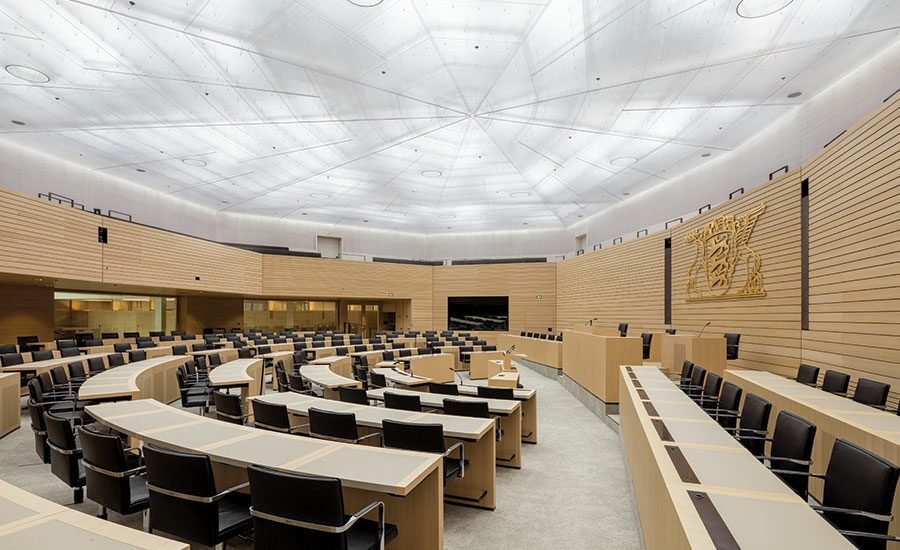
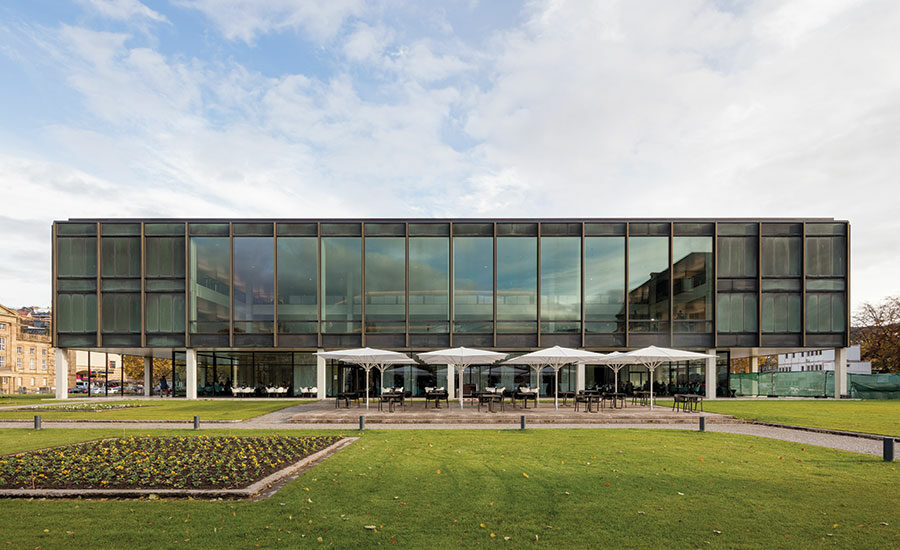
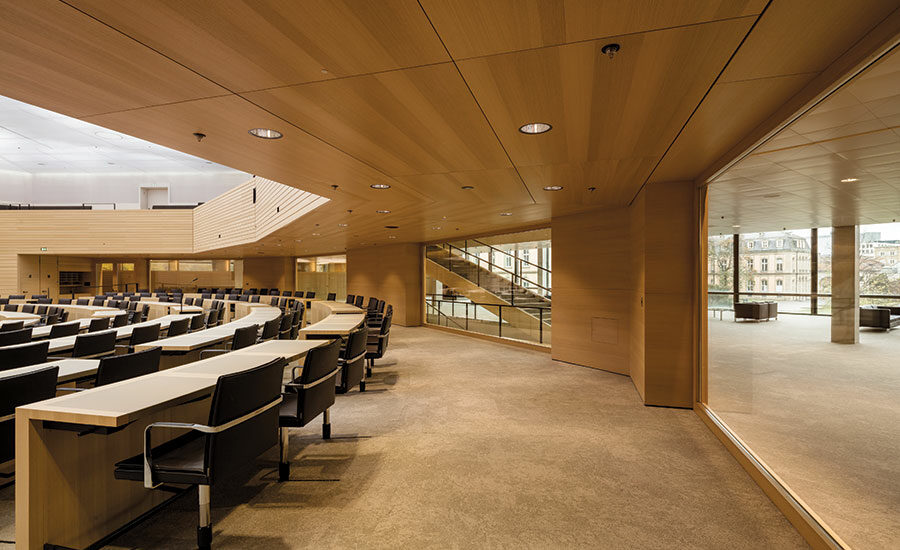
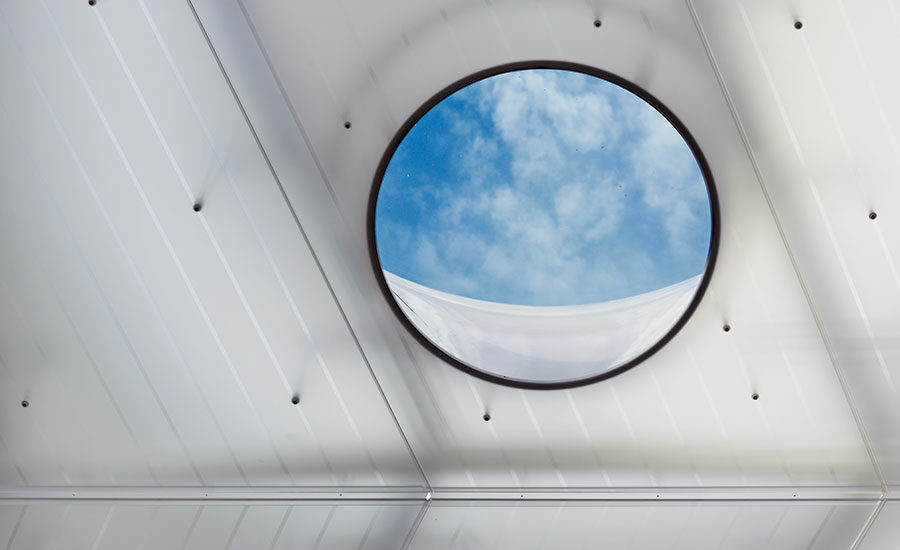
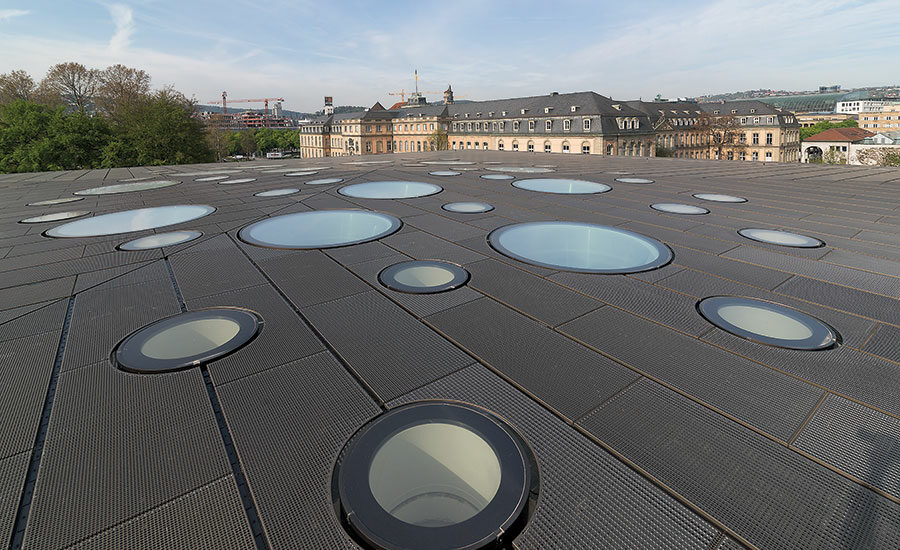
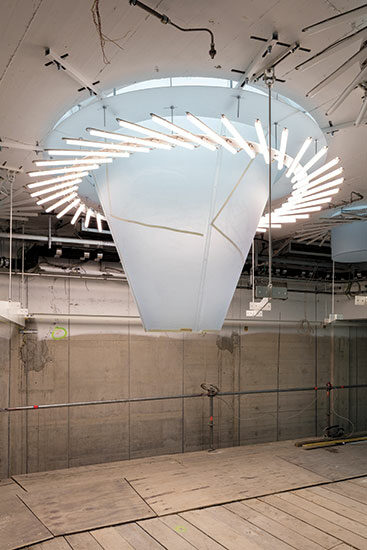


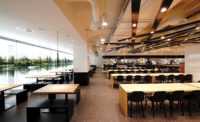
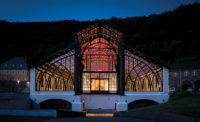
Post a comment to this article
Report Abusive Comment